Brawn vs Tech
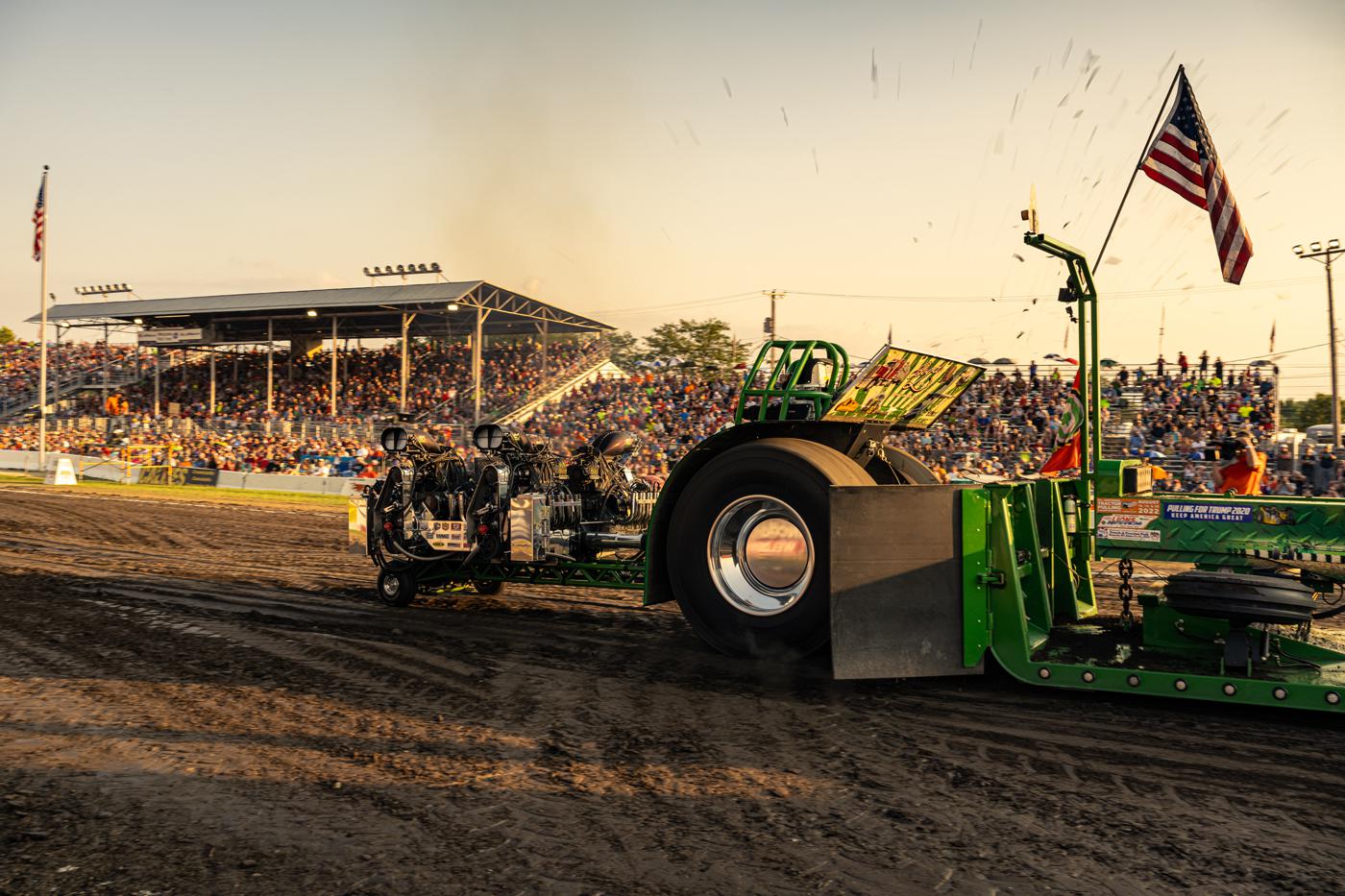
Truck and tractor pulling has always been about big engines and massive tires, but advanced technology is creeping into the sport with officials keeping a close eye on the developments.
Tractor pulling may be the only segment in motorsports where if a racer is having a tough time in one class, they can just bolt on another engine and step up to a different class.
That’s the option Bret Berg of Farmington, Minnesota, has when running his four-engine Renk Seed Money Maker tractor in the Modified class at events around the country. “In about 10 minutes in the pit, we can add a fifth engine for the Unlimited class,” said Berg, noting that each engine makes about 2,500 horsepower on methanol.
There might be some boat-racing classes where adding another outboard motor changes classes, but colorful multi-engine setups driving 30-inch-wide tires are the big crowd pleasers and clearly differentiate pulling from other motorsports. It’s also probably the only segment of motorsports where wind-tunnel testing is completely useless; however, that doesn’t imply that advanced technology isn’t trickling down to tractor pulling.
Despite its roots dating back a century or so to a few Midwest farmers putting their steel-wheeled tractors to the test by seeing who could pull the most weight, the sport has now grown to include sanctioning bodies with well-defined rules and classes.
The goal today isn’t challenging who can pull the most weight, but rather who can drag a sled over a dedicated course the furthest distance. The sled is designed to provide increased but controlled resistance as it is pulled down the track. The sled’s movable weight box is flexible to increase the weight and resistance depending on the class. Key to a successful pull is having enough horsepower to overcome this resistance and using special tires designed to grip the dirt track.
Pulling Developments
Tractor pulling suffered a horrendous 2020 season during the COVID-19 lockdowns since so many of its events were tied to fairs and other activities that were either canceled or were heavily restricted. But that break in the action actually led to a surge of horsepower.
“During the pandemic, so many competitors found more horsepower,” said Gregg Randall of the National Tractor Pullers Association (NTPA), Columbus, Ohio. “And now there are tires (see sidebar on page 66) that are getting a greater percentage of traction to the track.”
Pullers are leveraging advancements made in supercharger and turbocharger technologies to turn up the boost. Also, solid billet blocks and cylinder heads are giving racers more choices in engine configurations—and they’re not afraid to lean on those engines to the point they can’t come back for an encore pull-off.
“They’re running so hot now, you’re just not going to get them to come back. They’re producing more power and getting it to the track with the tire technology. That said, they’re running so much hotter that a second run is out of the question,” explained Randall, adding that officials have considered moving all pull-offs to the end of the session to give the teams more time to cool the engine and prepare for another pull. For teams with five engines and the need to change oil before another run, the time would definitely be welcomed.
David Visner of Visner Engine Development in Kentwood, Michigan, is one of those engineers pushing new engines in the sport. Currently, he is developing a hemi-head engine on a 5-inch bore-space block for which he is also producing a wedge-head option.
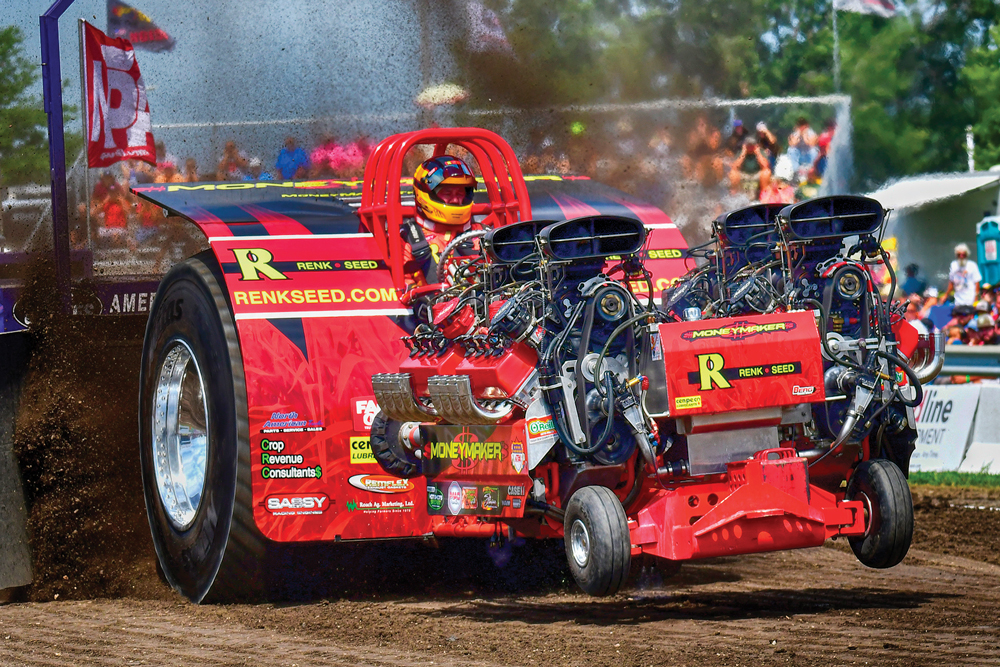
“The wedge has a valve orientation very similar to a GM DRCE3,” said Visner. “Now that we’re building our own blocks, we’re doing some things different and continuing to develop and compare the wedge and hemi. Valve geometry is the challenge because these engines have a 1.300-inch valve lift, which is very hard on the valvetrain. Pushrod angles are very important.”
The blocks will be machined from solid billet, starting with a 675-pound chunk of 6061 aluminum. Large displacement engines will use blocks with a 12-inch deck height, and smaller engines will use a 10.400-inch deck height.
“We have some unique cylinder sleeve designs, and we have some unique water jacket designs that we’re really excited about,” added Visner.
Constant Load
While pulling engines are influenced by drag racing technologies, the two sports have different needs.
“People don’t realize what a pulling motor has to do,” said Terry Hagedorn of Hagedorn Racing Engines, Thompson, Missouri. “Probably the only thing harder on a motor than truck or tractor pulling is offshore racing. You have constant load and running for an extended time. Our 800-inch motors have to run really good from 3,500 up to 8,500 plus. We get up to rpm in the first three seconds and may have to maintain that for 22 to 24 seconds. In drag racing, they’re pulling chutes after five seconds. We generally have more oil and heat issues when you’re loading the motor that severely.”
While the engines have seen huge strides in horsepower levels over the years, only incremental changes have been made in chassis design.
“Back in the 1980s, we went from mild steel to chromoly and did a lot of engineering on the design then,” said Tim Engler of Engler Machine & Tool, one of the leading chassis builders in the country, based in Princeton, Indiana. “But truthfully, the designs haven’t changed much.”
While most of the chassis have solid-mount axles, frames for some of the diesel classes are now being built with a front suspension. “It’s more for if you hit a bad spot on the track. A spring front end will cushion it and not unload the chassis near as fast,” added Engler.
Improved tires and greater horsepower have forced many competitors to adjust their gear ratios. “If the tires are better, we have to go to a little lower gear. And as they make more power you have to gear them back up,” said Engler.
Data Acquisition
Perhaps the most useful piece of technology that pullers have adapted is data acquisition. Sanctioning bodies heavily regulate electronics on pulling vehicles; however, data recorders are allowed.
“We really don’t have much new technology on the truck besides our Racepak,” said Carmen Foster, who races a 6,200-pound modified four-wheel-drive truck and was the 2021 national champion in her class. The truck runs a naturally aspirated 650-cubic-inch Sonny Leonard hemi that makes around 1,650 horsepower. “It tells us all the temperatures, throttle position, shock height, clutch slip, and more.”
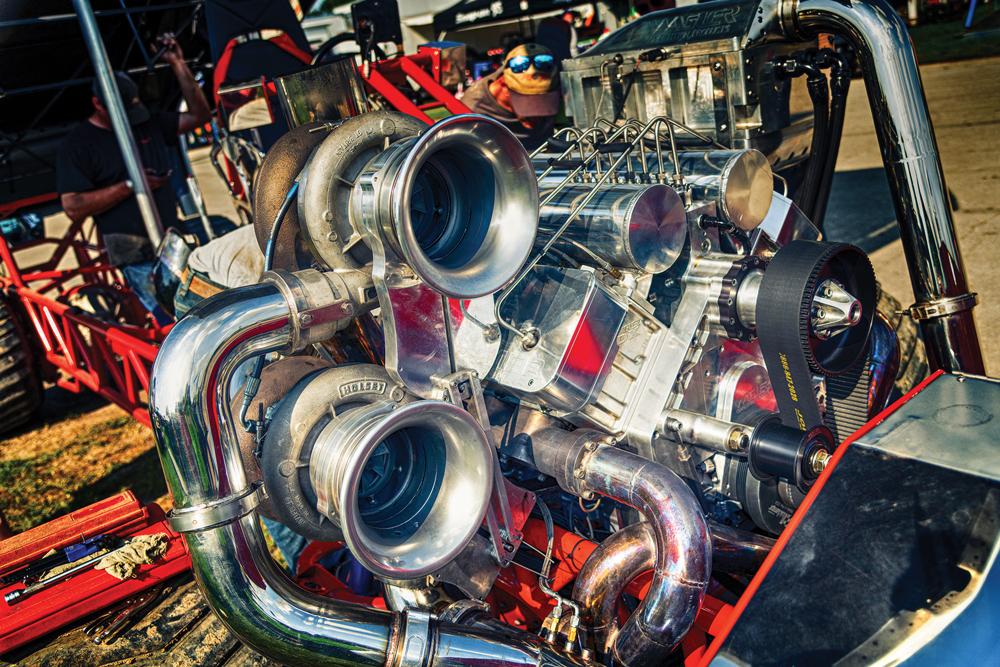
“For my own vehicle, I can download everything from the data acquisition,” said Kurt Afdahl, who runs a Light Pro Stock tractor and is president of the Wisconsin Tractor Pullers Association. “We can read cylinder temp, exhaust temp, speed, oil pressure—everything about the engine. We can fine-tune everything for our next run. It’s helped us make a lot more power, and also helps the longevity. If you’ve got a hot cylinder, you can do something before you melt that piston down. The technology has helped out in a big way.”
Keeping an eye on all the technological advances for the NTPA is tech director Marvin Epperson. He agreed with other observers in identifying tire advancements as the leading technology in the sport. But it’s also the category where some are trying to slip past the rules.
“Right off the bat some of them went over the specs and tires were too big,” recalled Epperson. “I had to shut them down, make them go back to the drawing board and narrow up the mold. Then they presented the tires to us again to be legal.”
Tires originally were molded with a tread in place, and there was no problem with illegal width. But the new tires were molded as a slick with extra rubber.
“They can cut whatever tread they want, but I don’t want to have to go measuring tires every day, so I wanted to catch them while they were brand new and then not have to worry about it,” explained Epperson.
Turbocharger design tricks are also drawing the officials’ attention. “The manufacturers are coming up with something new every day, and that’s one that may be hard to police,” admitted Epperson. “They’re doing things that are hard to find, both with the turbine wheel and the housings. The horsepower they’re gaining is just unreal.”
Since tire interaction with the track is so critical, sanctioning bodies have a strict policy against traction control devices. Ignition timing can be preset, but any adjustment based on real-time feedback from engine sensors is not allowed. Also not permitted is electronic fuel injection.
“I’m sure it’s coming someday, but as of now they’ve got too much horsepower. Once you go to EFI, it could be hard to police traction control,” said Epperson.
Engler, who is also one of the nation’s leading fuel-injection specialists, agreed. “I think [an EFI ban] honestly is a plus because I don’t think we need to get into electronics,” he said. “We build fuel injection for race car engines as well as tractors. Our mechanical fuel injection will still outperform EFI.”
Hot Topics
Perhaps the hottest trend for the pulling market is the mini tractors. There are classes for non-boosted small block engines, but the more popular vehicles sport blown big blocks. These racers stir up lots of dirt with all that power driving a smaller tire than the big tractors.
“A lot of people are switching from big tractors to the 2,050-pound mini rods with big V8s in them,” reported Epperson. “In some cases, high school and college kids are now driving them. Right now, we have an abundance of them.”
Benefits of the mini rod revolution include building and maintaining only one engine instead of three or more. The top class has a 565-cubic-inch limit with a 14-71 blower at 45% overdrive, or they can run 650 cubic inches naturally aspirated. “We also allow a single turbine with an 1,800-horsepower limit,” added Epperson.
They’re also easier to transport in smaller trailers, as the vehicle can’t be more than 76 inches wide, including tires and fenders. And, said Epperson, “the tires are cheaper.”
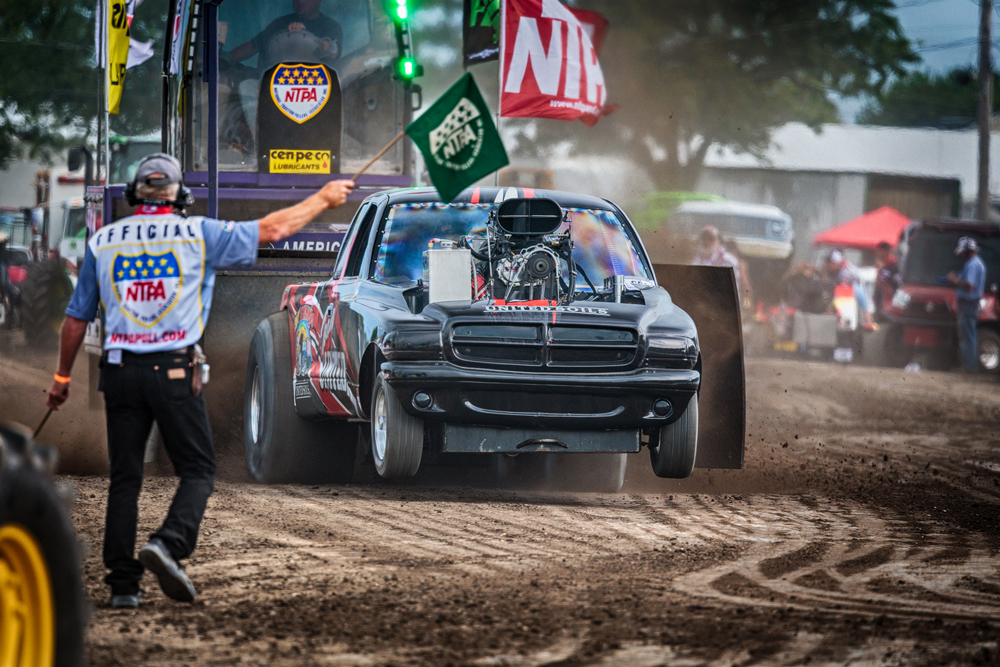
One of the other hot topics for Epperson’s crew is testing diesel fuel. “You’ve got to watch these guys who will try and doctor the diesel fuel and make it a little hotter. We test the fuel with a dielectric meter. They’re allowed to mix biodiesel, but most of the time with our new numbers they can’t put very much in, or it goes over the limit,” said Epperson. “The other stuff is the water, which they spray into the turbo system. Of course, they try to add stuff that will burn, so we check the water with an alcohol refractometer.”
Finally, the latest technology to enter the world of tractor pulling doesn’t have anything to do with engines, tires, or chassis. “Now there’s Full Pull Bet, so you can bet on truck pulling,” said Foster. “There’s an app that came out, and it’s all fully legal.”
Randall cautioned that negotiations with the developers of Full Pull Bet were continuing at press time, and that officials still hadn’t seen the final version of the software. “It’s kind of like a parimutuel style of wagering, so there are no odds against the house,” said Randall. “Everyone’s hopeful that it’s going to be fruitful in getting more people to watch our sport and getting into NTPA TV.
“It’s hard to say what it will look like,” Randall continued. “But I know the people behind it certainly are trying to do things the right way.”
Family Focus
For the future, promoting the sport through social media and keeping the fans in the stands informed will be priorities.
“The last two years have been phenomenal,” said Afdahl. “Attendance is great, and we actually picked up several new pullers. I believe we’ve got 11 new vehicles coming into Wisconsin this year.”
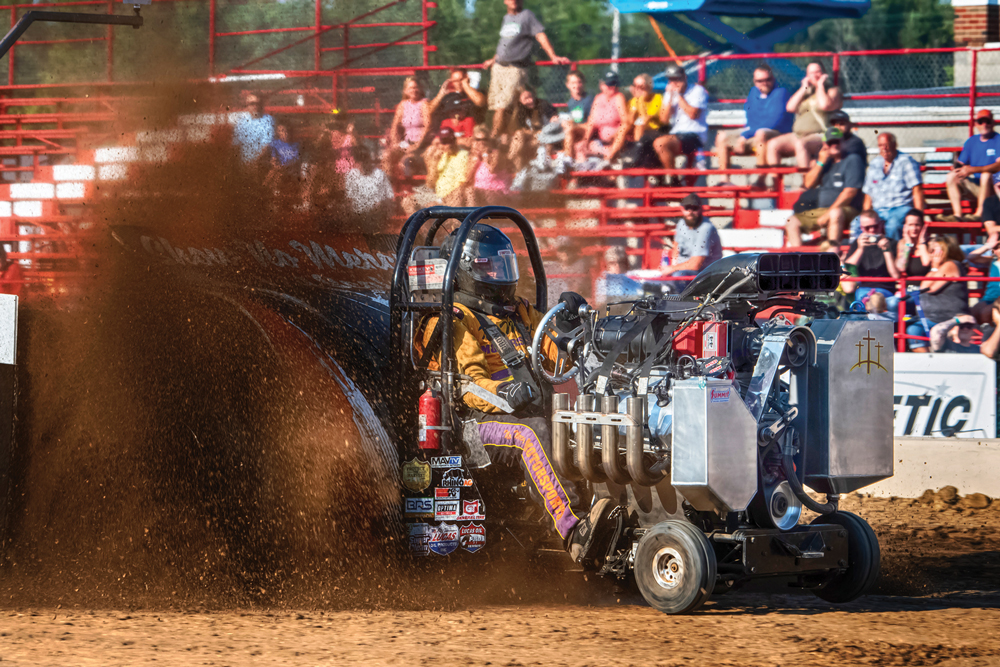
The association recently purchased a large portable video board for replays and posting driver data. Afdahl said by offering commercials during down time, more sponsors have come aboard. The group has also expanded its personnel roster to assist with entries and other duties.
“For us, it’s a huge family. We’re working really hard to bring the family aspect back into pulling,” said Afdahl. “We’re encouraging families to come to the events as well as our competitors. We encourage them not to show up as a single individual but to bring the entire family. Even in the advertising, we’re incorporating families.”
Priorities for the NTPA include scheduling up to 10 multi-day Grand National-style events, similar to NHRA and NASCAR that hold multi-day national events.
“Everything is lined up the same way,” said Randall, noting that currently there are three events that are five-session, three-day events. “There are two or three more that could be in that mix easily. It’s going to take some time, money, and sponsorship, and we’re working behind the scenes. Got a lot of exciting things in the near future.”
Finally, much of the success in tractor pulling these days is due to the economy in the agriculture market.
“Probably 80% of our clientele are farmers,” said Chad Mayhill of CM Pulling Tires, Reynolds, Indiana. “When the farming commodity prices are good, the pulling side’s always good.”
“The sport is agricultural-driven,” confirmed Berg. “The ag population of the US is less than 2%, and I think that affects the number of people in the stands. As far as the sport itself, there’s a lot more money in the sport. I think the competitors have a lot more personal financial backing than 30 years ago when people were taking stuff off the farm and modifying it.
“It kind of went down the NASCAR road where all the vehicles are specifically engineered to go tractor pulling,” said Berg. “There may be fewer pullers than 20 years ago, but the guys who are left are really serious about the sport.”
POWER TO THE DIRT
Want to know what led to the sudden invasion of tire technology into the sport of tractor pulling? Sponsorship pride.
Around 2015, when Mitas was a privately owned tire company in Europe, it sponsored a popular tractor puller on the Eurocup circuit. When the owners attended an event and discovered Firestone tires on their Mitas-sponsored vehicle, they couldn’t let that conflict continue.
“So they decided to build a pulling tire,” recalled Jeff Miller of Mitas, which is now part of global giant Yokohama TWS. “From the very beginning, it was strictly designed for pulling. What’s unique about our pulling tires is that it’s an actual slick. The competitors then groove their own tread patterns.”
The tire is constructed with plenty of rubber depth to accommodate any design, and there are guide markings molded into the surface. These markings help the racer determine exactly how many treads or chevrons they want as well as the direction of each.
The first tires were given to three competitors with mixed results. Then a Modified racer tried one of those original sets of tires. “He immediately went from a mid-pack runner to competing for the win,” explained Miller. “That got everyone’s attention. Then others tried it and found a performance advantage.”
The tire is offered in two sizes, and the compound has been updated, but no specifics were released.
Offering an alternative to the traditional Firestone tire and also designing in specific elements to complement different classes is what drove Aaron Docter of Pro Puller Tires in Firth, Nebraska, to develop new product.
“Realistically, there had been only one tire offered until about six years ago,” said Docter. “A tractor with 700 horsepower and a tractor with 7,000 horsepower had to make the same tire work. Our philosophy was that we didn’t think that those two classes needed to use the same product. We saw the need for different products.”
Docter adjusted ply ratings for lower horsepower classes and added strength to tires in higher horsepower classes. “We try to make the heavier ply tires so that the tire doesn’t wrinkle too much and make the pan drop. Then you’re going to be dragging dirt, which is just dead weight,” explained Docter. “If you’re a lighter tractor, you don’t need as heavy of a ply of the tire because you’re not going to be wrinkling it down as hard. It’s just finding that balance of where it will hook and give you traction.”

Pro Puller currently offers four sizes in different compounds for tractors. The tires are the company’s design but sourced from an outside manufacturer. As with the Mitas tire, tire cutters design and cut the tread pattern to each competitor’s specifications.
“The cutter can change the angle to either shallow or steep,” Docter said. “Also, they start with a .400-inch-tall bar, and we’re seeing some classes go down to .200-inch. Basically, we offer the closest starting point that you can get so that the cutters have an easier job.”
Driving even more tire development, outside of offering more choices, is horsepower. “It’s been a tremendous change in the last four or five years to where there are better designed tires,” said Chad Mayhill of CM Pulling Tires, Reynolds, Indiana. “They were maxed out on power. The tires couldn’t handle any more.”
Mayhill owns five molds and has the tires produced at Specialty Tires of America, a company the specializes in bias-ply tires for aircraft, mining, and industrial applications. Mayhill is also an expert tire cutter.
“The largest tire we have runs on a mini rod or two-wheel-drive class. Then we have tires for the core market down to the garden tractors,” said Mayhill. “We’ve also redone our four-wheel-drive tire to be more competitive.” —Mike Magda
SOURCES
CM Pulling Tires
hoosierpullingtires.com
Engler Machine & Tool
englermachine.com
Foster Motorsports
facebook.com/SimplyRedPullingTeam/
Hagedorn Racing Engines
hagedornracingengines.com
Mitas Tire
mitas-tires.com
Money Maker Tractor
facebook.com/profile.php?id=100068663547336
National Tractor Pullers Association
ntpapull.com
Pro Puller Tires
propullertires.com
Visner Engine Development
visnerengine.com
Wisconsin Tractor Pullers Association
wtpapull.com
 MEMBERSHIP LOGIN
MEMBERSHIP LOGIN JOIN PRI
JOIN PRI


